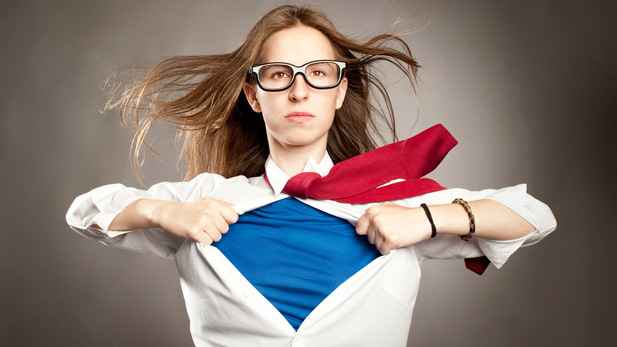By Ananya Nrusimha
Since their inception in the 1930s, comic books have been a quintessentially American medium. The characters within their pages represent the values our society cherishes, from innovation and intelligence to courage and bravery. Almost half of men in World War II training camps read comic books regularly to take their minds off the stress of war. On the home front, popular characters like Superman and Batman were used to encourage Americans to buy bonds and ration to support the war effort.
Today’s America, however, is very different from the United States comic books came of age in. The percentage of ethnic minorities in our population has more than doubled since the 1940s. 44% of Americans under the age of 15 are from ethnic minorities. These same minorities are among the many oppressed groups (such as women and members of the LGBT community) have a bevy of civil rights that they didn’t have during World War II. It’s important that our comic books and comic book creators reflect this change, that the Marvel and DC publishing houses (collectively known as the Big Two) and the universes they have created are just as diverse as our own.
However, only 29% of DC’s most prolific characters and 31.1% of Marvel’s are female. While straight, white cisgender males (a historically non-oppressed group in our society) make up only 1/3 of our population, they make up 46% of the members of Big Two superhero teams. The Big Two is certainly trying to increase diversity—they’ve introduced an average of about 4 LGBT characters per year since 2000 compared to 1 in 1940, and women have gone from representing around 13% of Big Two characters in the Sixties to around 25% now—but they aren’t doing enough. At this rate, the dismal representation of historically oppressed peoples in comic books isn’t going to improve anytime soon. We will be stuck with white cis male-dominated comic book universes for years, if not decades.
Unfortunately, the demographics of the Big Two themselves are even worse. A whopping 94.4% of comic book creators—which includes not only writers and pencillers but also editors, cover artists, and inkers—are male. 78.9% of these creators are white. We need to hear the voices of women, ethnic minorities, and members of the LGBT community in this industry; without them, it’ll be difficult to make diversity in the industry a reality.
The lack of meaningful change in the industry is partially fuelled a vocal subsection of the comic book community. This group is made up of stereotypical white cis male “fanboys” who grew up with comic books. Their passion for superheroes is tremendously deep, and they are often outraged by any change that’s made to the characters and the universes they love. Unfortunately, they often have little respect for people who love comic books who aren’t stereotypical fanboys. Many high-profile members of the comic book industry are members of this group, and their inappropriate comments and actions give the comic book industry a terrible reputation. Mark Millar, writer of Wanted and Kick-Ass (which both became major motion pictures) said in an interview that he “doesn’t think rape really matters”. Todd McFarlane, author and artist of the popular 1990s comic Spawn (which became a TV show) said that if he wouldn’t want to use superheroes to write stories about strong women because “it’s heavily testosterone-driven, and it’s a certain kind of group of people”. Gerry Conway, co-creator of 90’s anti-hero Punisher, justified this attitude by saying “the comics follow society. They lead society”. The comic book industry doesn’t want to lose this group, so it avoids long-term increases in diversity and always returns the universes to their status quo not long after any change is enacted.
However, this group isn’t nearly as large as it once was. While men once made up 92% of DC Comics readers, a whopping 47% of comic book fans are women today. Young women are the fastest growing demographic in the comic book community. Soon, members of historically oppressed groups will eclipse the subsection that calls for a white cis male-dominated status quo. It is no longer economically viable to continue to appease this subsection; it’s actually in the Big Two’s financial best interests to increase diversity and tell meaningful stories with minority characters. We’re already seeing this with the Pakistani-American character Ms. Marvel, whose book has very high digital sales. If the Big Two don’t make their universes more diverse quickly, it’ll be extremely difficult to retain new minority readers, which could easily lead to the death of the comic book industry since the aging white male fanboys will be unable to support the industry on their own.
Thanks to the recent spate of well-received superhero movies and TV shows, comics and their characters are more accepted and more mainstream than they’ve been for almost 70 years. The industry is so, so close to discarding their reputation of corrupting youth, being a less mature form of expression than novels, and having a fanbase dominated by stereotypical white male “nerds”. By making their universes reflect our population accurately, they could finally become a true mainstream medium. People would give this medium—which is as American as apple pie and has provided work that has as much critical merit as any classic—the respect it deserves. More people would learn about the great comic books if comics were better respected, which would broaden their mental horizons and spark their imaginations. It could encourage kids who don’t like traditional literature to read, and could be an effective learning tool in the classroom. The applications of comic books are limitless, and we will be so much richer intellectually and culturally if comics become part of mainstream culture. But people won’t use these applications of comic books if the industry continues to be dominated by white males both in their industry and in their fictional universes. They won’t appreciate what comic books have to offer until they can identify with comic book characters.

